We are lucky to have some beautiful roses in the garden that produce the most gorgeous pink flowers. Did you know there are over 300 species of rose in the world and fossils of roses have been found that date back to 35 million years ago?! Roses can live for a surprisingly long time, the world’s oldest living rose is believed to be 1,000 years old. It grows on the wall of a Cathedral in Germany and it even survived bombing in world war II when allied bombers destroyed most of the cathedral. Somehow it survived with just its roots remaining intact underneath the debris and began to grow again.

Roses are actually edible and they belong to a family of plants called Rosacaea which includes apples, apricots, cherries, peaches, pears, plums, blackberries and almonds. You can eat* the petals, flower buds, rosehips and even young leaves of roses. Rose hips are actually one of the best natural sources of vitamin C, they contain more than any other fruit. (*Safety note: Please don’t ever eat plants that may have had pesticides or chemicals used on them. It is always best to eat plants you have grown yourself and know are safe.)

Roses also provide a source of food for a wide variety of wildlife. Pollinators like the Rose Chafer beetle feed on the flowers in the summer and birds like thrushes, wax wings and finches feed on the rosehips in the autumn. Rose hips are the berry like fruit produced by rose plants. They appear once the pollinated flowers have faded and the petals have fallen away. This is why its important not to cut or dead head roses once they have finished flowering. By leaving the flowers to turn into rose hips you are providing a vital source of food for wildlife in the colder months.

Rosehips are also a great example to use when talking about the importance of pollinating insects in relation to the food we eat. You can often see insects buzzing back and forth between the roses when they are in full flower. Once the flowers have been pollinated the petals fall away and the bud begins to form the fruit. Without pollination the flowers would not turn into rosehips.
You can find lots of fun and interesting rose activity and recipe ideas below.
1. Go on wildlife safari amongst the roses
You will often find pollinating insects like bees, beetles, butterflies and moths in or around rose flowers. It is fascinating to watch them flit from flower to flower feeding on the nectar. You could take a notepad or camera with you to record your finds or even print out some nature bingo or scavenger hunt sheets.

One of my favourite beetles to find amongst roses is the beautiful Rose Chafer beetle (photo above). They are metallic emerald green and unlike most beetles they fly with their wing-cases closed as they have a special notch at the side to accommodate their membranous flight wings. The metallic shine on the shells of beetles like this are created by transparent polymers, which means the colours do not fade as colours created by pigment do.

You might even spot some flower crab spiders (photo above) or other species of spiders hiding amongst the flowers or leaves to catch passing pollinators. The undersides of rose leaves are often teeming with insects, eggs, caterpillars and larva that you would normally overlook. It’s the perfect place for them to shelter away from predators, wind and rain. You can also help citizen science by recording any minibeasts you find on national databases like Nature’s Calendar or iRecord.
2. Dissect a rose
Dissecting roses is a great way to learn about the anatomy of flowers. First you need to draw or print out a simple image of a flower onto cardboard or paper and then label all the different parts of anatomy. There is a great free download printable sheet you can use here. Next cut a rose in half and see if you can find and match all of the parts in the flower to the parts in the picture. This is a great opportunity to talk about pollination and how flowers attract insects using bright petals and sweet smelling nectar. You can also demonstrate how insects brush against the pollinating parts of the flower picking up pollen that then gets distributed to all the other flowers the insects visit afterwards.

3. Sensory exploration pots
Scented edible flowers like roses along with herbs, spices and fruits are great for sensory exploration and play. You can easily fill some recycled pots or containers with a variety of differently scented materials. Then the children can have fun guessing what is in each pot by smelling and shaking them whilst the lids are on. Or by opening them to touch, taste and explore the what is inside. Here are some ideas of sensory materials you could use:
- Edible flowers: Roses, Dandelions, Elderflower, Marigolds, Nasturtiums, Borage, Pansy’s or Primroses.
- Scented herbs: Lavender, Basil, Rosemary, Marjoram, Sage, Thyme, Oregano, Parsley and Chives.
- Spices: Cumin, Cinnamon, Paprika, Vanilla, Turmeric, Ginger, Cardamom, Anise, Clove and Liquorice.
- Fruits: Orange, lemon, lime, apple, grapefruit, strawberries and banana.

4. Rose petal confetti
Natural rose petal confetti is a fun, environmentally friendly alternative to glitter and regular confetti. If also smells absolutely gorgeous. You can use fresh rose petals or dried as confetti. To dry your rose petal simply spread them out on a dry clean surface (a tray or piece of cardboard works well) and leave them in a cool area to dry out.

Your petals should keep well in an air tight container as long as you keep them dry. If you pop your dried rose petals into old jam jar or containers they can make great little gifts, decorations or table centre pieces. You could also give the container extra decoration with string, ribbon, paint or natural materials.

5. Nature art
Nature art (also sometimes called land art) is a wonderful nature activity that encourages creativity and fine motor skills in children of all ages and abilities. All you need is some imagination and natural materials to make a picture. If you grow your own roses you can use the petals and leaves to make some bright and beautiful nature art pictures and patterns. After you have finished making pictures you can also then bake with the roses using one of the recipes below.

On windy days it’s hard to make a pictures and shapes with petals and lighter objects without them blowing away. So you could always bring your nature art materials indoors to play with. You could then glue your finished pieces to paper or cardboard so you can keep and enjoy them for longer. Or you could take photos of your artwork so you can then print them out or even turn them into cards to give to friends and family.

6. Nature painting
Nature painting is great messy fun and for children of all ages and abilities. All you need is some paint and natural materials like roses, leaves, sticks, stones, pine cones bark and grass ect. You could have a nature treasure hunt in a garden or go on on a nature walk to find the materials. Please however don’t pick any wild flowers, only collect flowers you have grown yourself or fallen ones you find on the floor. We added in some roses from our garden

Now all you need is some paint and something to paint on. Recycled cardboard is a great environmentally material to use instead of paper. Simply cut out panels from old cardboard boxes and packaging. Then pour paint onto a tray, bowl or another piece of cardboard. The children can then have fun exploring the different patterns, shapes and textures of the materials they have found. Dipping, swirling and rolling them around in the paint and across the cardboard. They could even use the materials as a canvas, painting straight onto the surface of roses, leaves, bark or pine cones.

7. Nature threading and weaving boards
A piece of recycled cardboard makes a great base for a threading and weaving nature hunt board. All you need to do is ask the children to draw or paint simple pictures, shapes or faces onto some cardboard. (Or you could do it for them if they are too little). Then carefully poke a pencil through the cardboard at different points to make holes for the children to poke, thread and weave found natural materials through.

You could use leaves, long grass, plant stems, bark, fallen fruit, nuts, seeds and flowers. But pretty please don’t pick any wild flowers, only collect ones you have grown yourself (like roses) or fallen ones you find on the floor. Your boards could be as simple or as decorative as you like, its great fun to draw different characters, flower pots, animals, clothes and scenes for the children to decorate and embellish.
8. Celery stalk rose prints
The bottom stalks of celery naturally form a rose shaped pattern which is perfect for using to make rose prints. All you need the leftover end of a celery stalk, paint and a surface to print onto like paper or recycled cardboard.


It is also fun to experiment printing on other different types of surfaces and textures like fabric, foil and wood. And as long as you use non toxic paint you can even print on outdoor surfaces like paths, trees and leaves.

9. Make a paper rose
It is surprisingly quick and simple to make a 3D rose using just two strips of paper, card or fabric. First you need to cut out two long wide strips of paper, card or fabric (If you are using A4 you will need 4 strips). Then cut a wave petal of petals into each strip (see photo below) the petals need to start off small and then increase in size across the strips.

Next start rolling the first strip of petals up, pinching and folding each petal at the base as you wrap and wind them round each other. Keep wrapping and layering the petals from the first strip until you have created the roses centre and then tape the end to hold it in place. Now start winding the other strip of petals around the centre flower folding and pinching the bottoms of the petals as you do so to crumple and flare them out slightly until you get to the end. Tape the bottom of the flower to hol the ends and both parts together.

10. Egg carton roses
We hate to waste anything and recycling and reusing materials is one of many small things we can all do to help the environment. So instead of chucking used packaging like egg cartons we like to find ways to use them in crafts and activities. You can cut easily egg carton centres into simple rose flower shapes. The children can have fun decorating them using paint, pens or collage. Roses come in a variety of colours from red, pink and white to yellow, peach, cream and orange. You can also get rarer varieties of purple, blue and black rose.

How about adding some green stems and leaves to your roses using painted or decorated cardboard, paper or scrap fabric. You can use the finished flowers as loose parts, play props, decorations or glue them onto cards or give them as gifts in the form of single roses or bouquets.
11. Cardboard tube rose flowers
To make cardboard tube rose flowers simply cut an old cardboard kitchen roll tube in half (or if you are using an old wrapping paper tube cut it into into quarters). Next you need to cut an even pattern of slits into one of the ends of the tube. Finally bend and fan out the strips to form the petals of your rose flower shapes. You can then dip your rose flower shapes into paint for printing onto paper or card. Or even just decorate and paint the tubes themselves to create pretty flowers for decorations or use in pretend play.

12. Edible rose jelly
Edible herbs and flowers bring another dimension of textures, tastes, scents and colours to jelly. You can use herbs like mint, rosemary, thyme, chives, sage and basil. Or edible flowers like lavender, pansy’s, roses, nasturtium and chives. Simply place the freshly washed edible herbs or flowers in a mould and then pour over jelly mix. Then place the jelly into a fridge to set. Jelly is great for sensory play as it’s tactile, edible and smells great.

13 Sensory water play
Water play is a great sensory activity for children of all ages. Rose petals scattered in the water help to add extra scent, colour and texture for the children to enjoy and explore. Lavender and mint are also wonderfully calming herbs to use, but you could also use uplifting fresh citrus fruit slices as well.

14. Sensory ice play
After you finish you can recycle the water and materials by pouring them into different shaped containers to freeze and replay with as ice blocks another day. It’s fascinating to see the objects trapped in the ice. You can hold the ice up to the light or experiment melting or breaking the ice in different ways using salt and warm water. Or the children can have fun stacking and playing with the ice to make towers.

Ice is a wonderful material for sensory play and exploration. All you need for this activity is an ice cube tray, water and some edible sensory materials like scented herbs, edible flowers, fruits or food flavourings. Lavender and mint also wonderfully calming herbs to use, but you could also use uplifting fresh citrus fruit slices. You can find a handy list of edible sensory material ideas below for inspiration.
- Scented herbs like Lavender, Basil, Rosemary, Marjoram, Sage, Thyme, Oregano, Parsley and Chives.
- Edible flowers like Roses, Dandelions, Elderflower, Marigolds, Nasturtiums, Pansy’s or Primroses.
- Citrus fruit slices or citrus peel play shapes like oranges, lemons, limes or grapefruit.
- Other chopped fruits like strawberries, melon, raspberries, blackberries, apple, plum or peach.

Simply place a selection of the different sensory materials into the ice cube tray and then fill it with water. Place the tray in a freezer for a few hours or overnight to freeze. Then pop out the ice cubes and enjoy them in sensory play. You could also incorporate them into water play or use them in pretend play with mud kitchens. The children will enjoy exploring all the different scents, tastes and textures as the ice melts. *Please just be aware of the choking hazard of the ice cubes or any other materials you use with small children.
15. Rose scented playdough
It’s surprisingly quick and simple to make your own homemade playdough using just kitchen cupboard ingredients. You can also easily add extra sensory elements with natural materials like fresh or dried rose petals and scented herbs (Lavender and mint are wonderfully calming herbs to use), or you could pop in a few drops of food colouring or flavourings to give it a bit more scent or colour.

To make your playdough base you will need the following ingredients.
- 300g of plain flour
- 80g salt
- 2 tablespoons of cream of tartar
- 2 tablespoons of vegetable oil
- 240ml of hot water
- A handful of fresh or dried lavender flowers
First mix the flour, salt and cream of tartar together than add in the oil and any natural materials (see below for a handy list of suggestions). Next start to pour the water in slowly (you might not need it all) and if you are using food colouring you can add a few drops now.

If the playdough feels to wet then add in more flour it it feels to dry add in a few more drops of water. Finally knead your playdough until its a smooth consistent dough. Once it feels right then it’s ready to use. Children can add additional natural materials to the dough as they play and have fun exploring and experimenting with mark making as well. Just remember that salt is toxic to plants and wildlife so do not leave playdough outside unattended or let it come into contact with grass or plants outdoors. We always play with ours on a tray or board.
16. Tataki zome
Tataki zome is the Japanese art of transferring botanical dyes from flowers and leaves onto fabric by simply hammering them onto the surface. It’s also know as flower pounding, leaf bashing and sometimes refereed to as Hapa Zome. (Funnily enough Hapa Zome came from an artist getting the name wrong, now its more widely used than Tataki zome which is the correct name for it.)

For this activity you will need scraps of cotton or linen fabric or some old clothing. something to hammer with like a rounded stone, hammer or rolling pin, a safe surface to hammer on and finally natural botanical materials like flowers, leaves and grass. *Pretty please however don’t pick any wild flowers, only collect flowers you have grown yourself, fallen ones you find on the floor or flowers from shop bought bouquets.
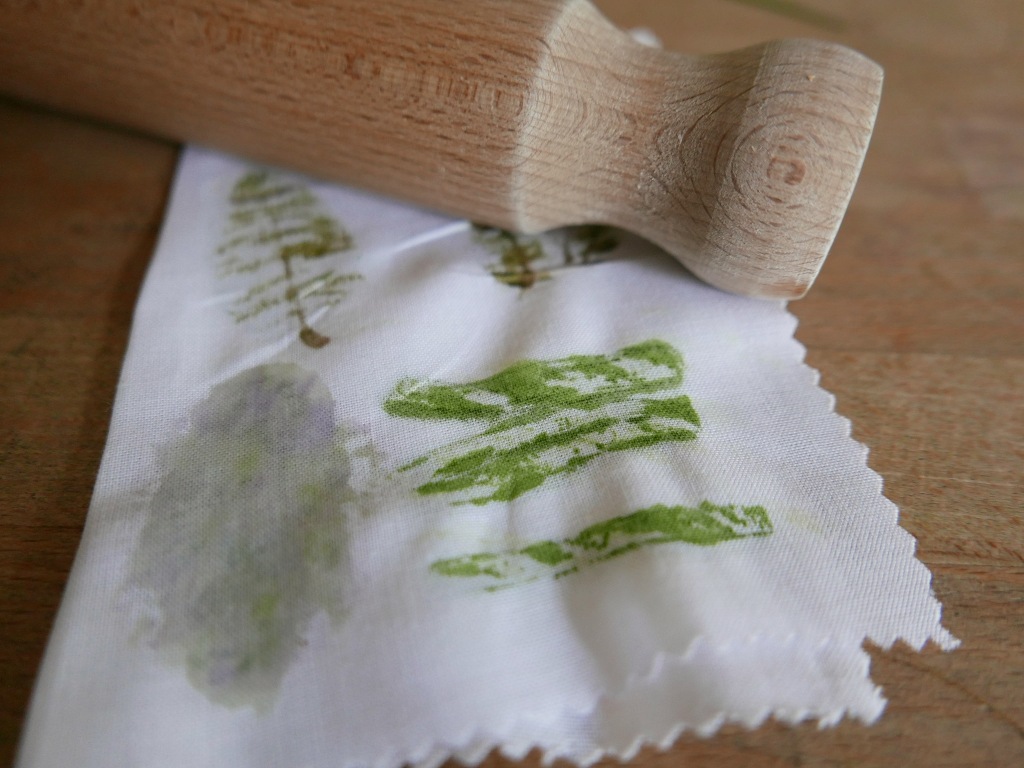
Lay the fabric or clothing flat onto a hammer safe surface and arrange your flowers and leaves on top. Then cover everything with a piece of paper or another piece of fabric. Carefully but firmly (supervision required at all times for this) hammer across the fabric with a stone or hammer. You should be able to see the dye seeping through the fabric so make sure you have hammered evenly across. Peel back the paper to see the images you have made.
17. Rose petal slime (Taste safe and non toxic)
It’s surprisingly simple to make your own taste safe and non toxic slime using just tapioca flour and water. You can easily add extra sensory elements with natural materials like dried rose petals or scented herbs (Lavender and mint are wonderfully calming herbs to use) or pop in a few drops of food colouring or flavourings. See below for a helpful list of suggestions of natural materials you can use.

To make your tapioca base you just need to add equal amounts of tapioca flour to water (for example 1 cup of each). If you are using food colouring you should also add a few drops now (but wait to add other materials or flavourings) and then mix the tapioca and water together in a glass bowl.
Now you need to heat the mix in a microwave for 30 seconds bursts, stirring the mix in between each 30 second burst until its become translucent and jelly like. If it becomes too firm and solid you can always add in more water. A good test is to see how slime like it is when you lift it on a spoon.

Once you have the right consistency you can add in any natural materials or flavourings you like to the slime by squishing and kneading them. And voila your slime is now ready to play with. As it’s non toxic and taste safe it’s perfect for little learners and it’s also bio degradable so it’s perfectly safe to play with outdoors.
18. Rose petal and honey cupcakes
To make rose petal and honey cupcakes you will need you will need
- 100g softened butter or an alternative butter spread
- 100g caster sugar
- 1 egg (lightly beaten)
- 100g self raising flour (or alternatively 100g of plain flour with 2 teaspoons of baking powder added)
- 1 teaspoon of baking powder
- 1 tablespoon of finely chopped fresh or dried rose petals
- 1 tablespoon of honey.

Before you start it helps to preheat the oven to 180 oC/340oF.0
First put the butter and sugar together in a mixing bowl and beat it together until it’s light and fluffy. Next gradually add in the beaten egg whilst continuing to stir the mix. Add in the flour, baking powder, petals and honey and then whip everything with a spoon or mix with an electric mixer for for a few minutes until the mix is light and fluffy.

Pour the mix into cupcake cases (don’t fill to the top as the mixture rises quite a lot) and place in the oven for 15 minutes or until the cakes are golden brown. Leave to cool and then enjoy as they are or decorate. You can also make rose flavoured icing like we did by boiling a rose petals in water for 5 minutes. then sieve out the petals and use the rose infused water to make up your icing.
19. Rose petal jam (vegan recipe)
To make rose petal jam you will need:
- 250g of fresh rose petals*
- 250g of caster sugar
- 2 lemons
- 1 litre of water

Carefully wash and inspect the petals making sure to remove any damaged ones. Shake to remove any excess water and then place the petals into a bowl or tub with a handful of the sugar.
Using your fingers (don’t forget to wash you hands first) massage the sugar into the petals gently, its doesn’t matter if you bruise them a little, just don’t completely squash them. Then cover the bowl or tub and place it in the fridge overnight to let the rose oil infuse into the sugar.

Next pour the rest of the sugar into a saucepan with the water and the juice from two lemons. Heat the saucepan slowly and stirring constantly. just as its reaching the boil add in the sugared rose petals. Simmer and stir on and off for a further 20-30 minutes then bring the pan to the boil again. Stir and keep the pan at boiling point for a further 5 minutes until, the mixture has thickened.

When you are happy with the thickness pour the mixture straight into a sterilised container. You can sterilise old jam jars by rinsing them out well with soapy water then filling them with boiling water for 5 minutes or by placing them in a warm oven for a few minutes (caution this will make the glass really hot, so handle with care and oven gloves.)

You can enjoy your Rose petal jam on toast, in sandwiches or on scones and cakes. Store it in the fridge in an air tight container and use within a week or two of opening the jar. Or if you make a large batch you could even freeze some to use and enjoy later.
20. Rose petal tea
This is so simple to make, you just pick some fresh rose petals. It might be a good idea to leave any petals you have picked on a plate outside for a few minutes to allow any small insects to scuttle off.

Carefully wash and inspect the petals making sure to remove any damaged ones. Shake to remove any excess water and then place the petals spread out on kitchen roll or a tray.

Once dry you can store the dry petals in an air tight container and use them like you would normal loose leaf tea. You can enjoy your rose tea hot or even as iced tea. You could even add sugar or honey for a bit of sweetness. Ours tasted lovely with a splash of the dandelion honey we made the other day.
21. Fresh face masks
Fresh face masks are one of the quickest and easiest things you can make. To make a fresh face mask simply mix any combination and amount of the ingredients listed below together. It does help to have a liquid base like banana, yogurt or honey to make it easier to spread your face mask on but its not essential. It’s great fun experimenting with different ingredients.

- Bananas makes a great starter base for a face mask as its naturally moisturising and makes your skin feel refreshed. Its also a great way to use up overripe bananas.
- Natural yogurt is also a good starter base as it contains lactic acid which helps cleanse your skin.
- Honey has natural antibacterial properties and also moisturises and helps soothe irritated skin.
- Lemon juice, orange juice, lime juice and grapefruit juices are all great cleansers and helps brighten tired skin.
- Oats contain compounds that soothe itchy, dry and irritated skin.
- Flowers and herbs like lavender, rose, mint and rosemary all contain rich and calming essential oils that are good for your skin and also smell fantastic.
- Cocoa powder (unsweetened) smalls delicious and mentally boosts and uplifts your mood… it also might make you want to eat chocolate.
- A drop or two of skin safe essential oils (check to make sure its safe for contact with the skin before use) can all add an extra sensory, uplifting or calming element to your facemask.
- Sugar, desiccated coconut, coffee grounds and baking soda are all great exfoliates you can add to your face mask to carefully rub away dead skins cells with.
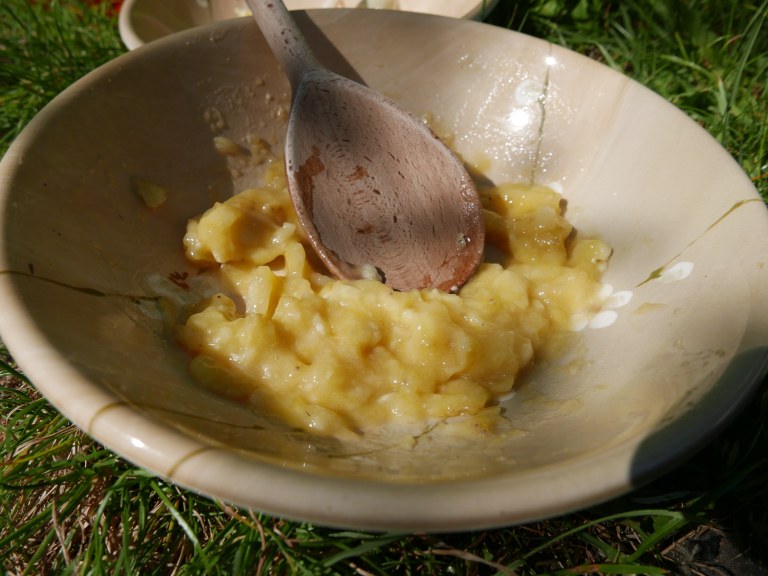
When you are finished you can chill your face mask for a few hours or use it immediately, they don’t keep long so use them up quickly! Just remember to do a small skin sample test on your arm for a few minutes first to make sure you don’t have a reaction to any of the ingredients and also try to avoid getting it anywhere near your eyes.
22. Rose petal lip balm
It is surprisingly simple and easy to make your own natural rose petal lip balm using just 3 ingredients. First you need a handful of fresh rose petals, Bees wax or the vegan alternative of candelilla wax and a carrier oil like olive oil, sunflower oil, coconut oil sweet almond oil or castor oil.
First place the rose petals in a jam jar and cover them with your choice of carrier oil. Then place the jar on a window sill or warm place to infuse for 2 weeks. Make sure you stir the oil every few days and make sure the petals are completely covered with oil.

After 2 weeks strain the oil through a muslin a cup or jug and measure the weight. If you are using bees wax you will need 1 part beeswax to 3 parts oil (For example 300g of oil only needs 100g of beeswax), If you are using candellia oil you want to use 1 part to 4 parts oil (for example 200g of oil needs 50g of beeswax). Pour the oil into an old saucepan and gently heat, add in the bees wax of candillia wax and stir until its fully melted and mixed together. Pour it into a sterilised container or pot like an old mini jam jar and leave to cool and set. If your lip balm turns out too soft or hard you can always re-melt it and add in more oil or wax.
23. Rose petal bath bombs
Rose petal bath bombs require slightly more ingredients but are otherwise quick and simple to make. Bath bombs fizz because of the chemical reaction between acids and alkali. When you combine an acid with a carbonate alkali they react to create salt, water and carbon dioxide. As the carbon dioxide gas is released it forms fizzing bubbles.

To make a bath bomb you will need.
- 100g bicarbonate of soda which is an alkali
- 50g citric acid (You can often buy this from health food shops or online)
- 25g cornflour
- 2 tbsp of natural cooking oil (Coconut oil, olive oil ect)
- Dried rose flower petals.
- Optional extra you could also add a drop or two of skin safe essential oils (check to make sure its safe for contact with the skin before use) to add an extra sensory, uplifting or calming element to your bath bomb.

Simply place all of the ingredients in a bowl and mix and combine them together. You want the mixture to clump together when you press it in your hands so it holds its shape. You can always add a little more oil or a tiny amount of water to the mix to make it stick better. but be careful not to use to much water as it will set off the chemical reaction between the bicarbonate of soda and citrus acid.
Now you can either place your mixture in a mould or form them into a ball by hand. We used silicone cup cakes cases as our mould but you can also use cookie cutters, old Easter eggs cases and small baking tins. Pack the mixture firmly down into the moulds and leave them to dry overnight. Then carefully tap them out onto a plate.

If your bath bombs come out of the moulds in pieces or as a complete mess don’t panic or worry! You can still form them back up into balls like we did when ours came out in pieces. Or use them as bath salts to sprinkle onto your bath or use to make magic potions. Enjoy your bath bombs in the bath or give them as gifts to friends and family.
24. Rose petal bath salts
Its so quick and easy to make your own rose petal decorated and infused bath salts. You simply need a sterilised* old jam jar some Epsom salts and dried rose petals. Just mix the salts and rose petals together and pop them in the jam jar to infuse. If you decorate your jam jars with string, ribbon, paint or natural materials they make great little gifts to give to friends and family.

*You can sterilise old jam jars by rinsing them out well with soapy water then filling them with boiling water for 5 minutes or by placing them in a warm oven for a few minutes (caution this will make the glass really hot, so handle with care and oven gloves.)
25. Rose petal soap
Homemade soap is so quick and simple to make, you just need a basic soap base (we used an organic vegan one) which you can often get from health food shops or online. A silicone mould, which doesn’t need to be anything special, we just used some silicone cupcakes cases we already had. And some natural dried flowers and herbs like lavender, rose, mint and rosemary (which all contain rich and calming essential oils that are good for your skin and also smell fantastic.) Or a drop or two of skin safe essential oils (check to make sure its safe for contact with the skin before use) to add an extra sensory, uplifting or calming element to your soap.

You could also add in a drop or two of food colouring or some exfoliating materials Sugar, desiccated coconut and coffee grounds are all great exfoliates that you can add to your soap.
Simply place the soap base in a microwavable container and then microwave it for 30 second intervals until the soap has fully melted. Then quickly stir in your natural ingredients (careful the melted soap will be hot) and then carefully pour it into your silicone mould. Leave it to cool and set fully for an hour or two before handling.
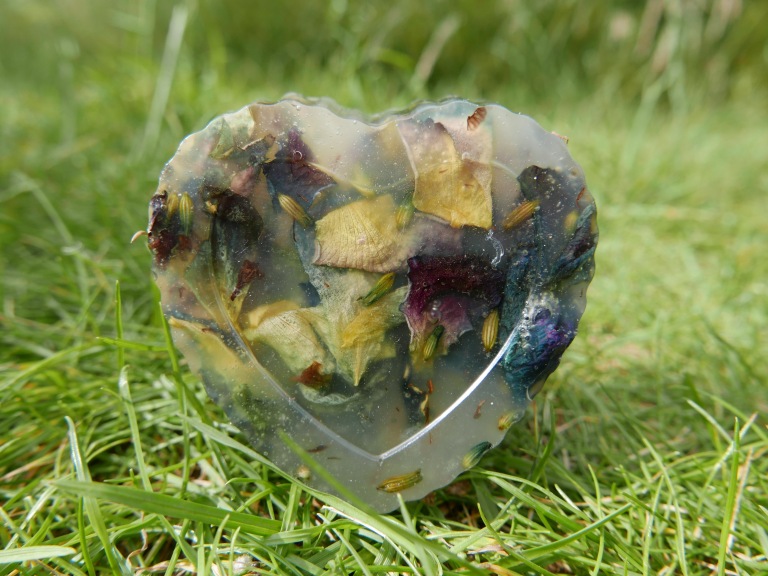
When the soap is fully set you can pop it out of the mould and enjoy and use it straight away. We simply used dried rose petals and lavender flowers from our garden in our soap and it looks and smells fantastic. They would make great little gifts for friends and family.
26. Rose petal blusher
Making a simple blusher out of dried rose petals is really simple. You just need a handful of dried rose petals and some cornflour. You simply need to grind the dried rose petals to a powder using a pestle and mortar (or you could use a clean washed stone on a chopping board to grind them down in the same way) then add in small amounts of corn flour until you get the desired colour and consistency for your blusher. Your blusher should keep well in an air tight container as long as you keep it dry.

27. Rose petal short bread biscuits
To make rose petal short bread biscuits you will need:
- 120 g of Butter
- 60g of caster sugar
- 180g of plain Flour
- A tablespoon of fresh or dried rose petals

Firstly heat the oven to 180c
Cream the butter and sugar together before carefully add in the flour and petals and mix until you have a smooth mix you can roll into a ball. Chill the dough in the fridge for 30 minutes.

Roll the dough out to biscuit thickness and then use cookie cutters to cut out the biscuits. Place the biscuits on a tray covered in greaseproof paper, then pop them into the oven for 15 minutes (or until golden brown). The biscuits should keep an air tight container for 5 days or you can freeze them and save them to enjoy at a later date.
28. Rose ice cream (Egg free recipe)
To make rose ice cream you will need.
- A handful of rose petals
- 200ml of water
- 100g of caster sugar
- 300ml of double cream
- 300ml of full fat milk

Pour the water into a small saucepan with the sugar and then heat gently and stir until the sugar has dissolved. Add finely chopped rose petals and simmer gently for a further 15-20 minutes, stirring regularly. Take the saucepan off the heat and leave the mixture to cool.
Combine with all of the other ingredients and mix well. Then place the mixture into an ice cream maker or freezer safe container. If you are freezing without an ice cream maker you will need to pop the container in a freezer and stir the mixture every 15 minutes to break up the ice crystals and until the mixture has frozen. Decorate with fresh or candied rose petals.
29. Candied rose petals.
Candied rose petals are simple and easy to make and make beautiful decorations on cakes. To make candied rose petals you first need to pick fresh rose petals and wash and dry them carefully. Next place the petals on a sheet of grease proof paper and then lightly brush them with egg white. Finally sieve over a fine coating of icing sugar before turning them over and repeating the same steps on the other side.

30. Floral chocolate
It is really quick and simple to make decorative bars of floral chocolate to give as gifts to friends and family. Simply melt a bar of white or brown chocolate in the microwave in a glass bowl for 30 second bursts at a time. Stir in-between each burst and heat until the chocolate has fully melted and is smooth and glossy.

Pour the chocolate into a clean plastic mould or container and sprinkle over freshly washed lavender flowers and or finely chopped lavender leaves. You could also mix another colour of chocolate in as well at this stage. Place the container in the fridge to set for an hour or so before removing the chocolate carefully from the mould or container.
31. Rose hip syrup
Rose hips are ripe and ready to pick when they red and soft to touch but not shrivelled. Most people believe they taste best after the first frost of the year. All you need to make rosehip syrup is:
- 300g-500g rosehips*
- 600ml water
- 350g sugar
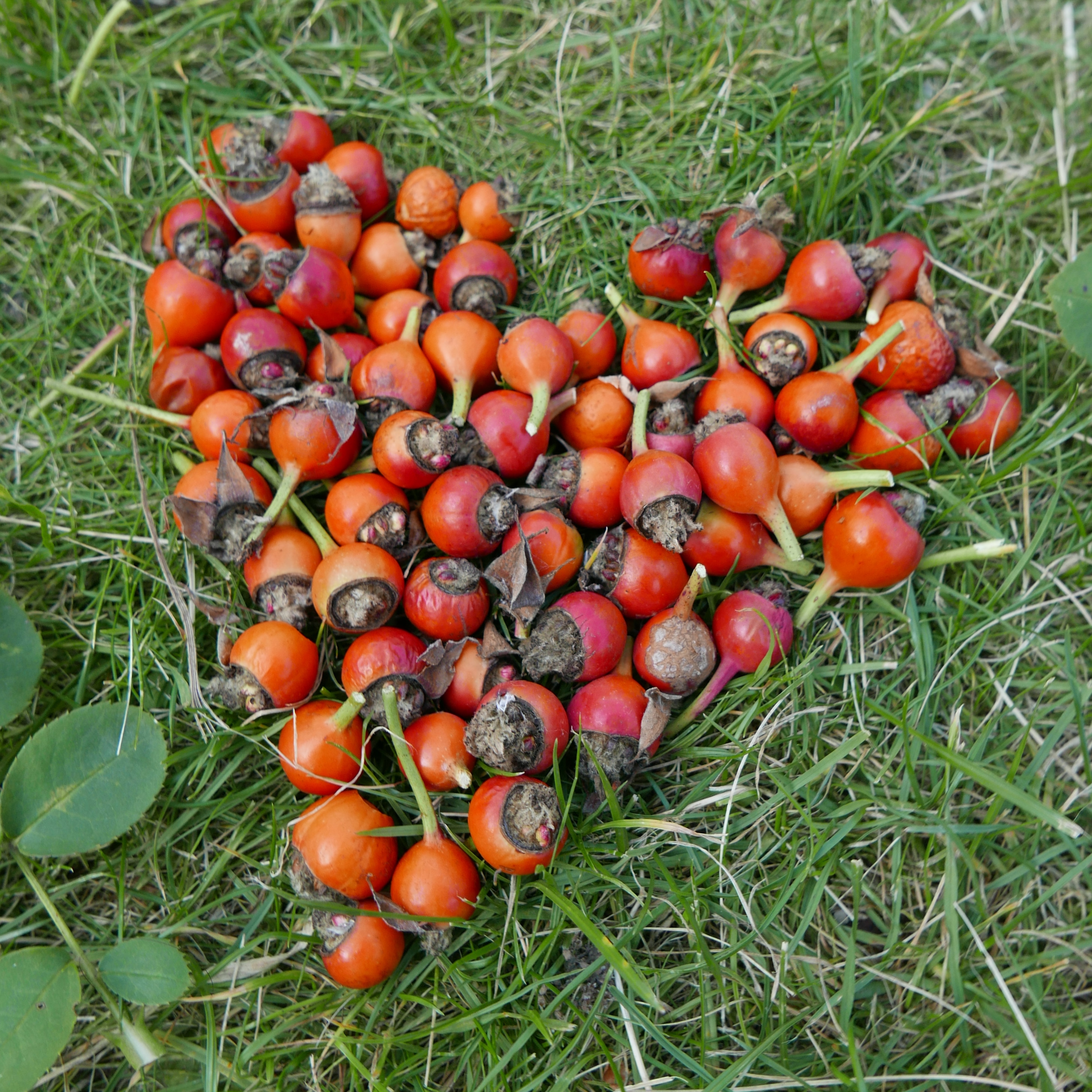
First wash the fresh picked rosehips thoroughly and then chop them roughly into halves or pieces. Next place them in a saucepan with 600ml of water. Bring the water to the boil and then reduce the temperature down to a simmer. Stir and then continue to simmer and stir the mixture for 15 minutes.
Then strain the mixture through a sieve or muslin cloth. Rose hips contain tiny irritating hairs so its important to stain the mixture properly a few times to make sure all the hairs have been removed.

Return to the heat and simmer and add the sugar. Stir and then continue to simmer and stir the mixture until the sugar has dissolved completely. Then heat gently for a further 5-20 minutes until the mixture is as thick and syrupy as you like it. Then pour your syrup into a sterilised bottle or jam jar.
You can sterilise old jam jars and bottles by rinsing them out well with soapy water then filling them with boiling water for 5 minutes or by placing them in a warm oven for a few minutes (caution this will make the glass really hot, so handle with care and oven gloves.)

Place the lid on the jars or bottles whilst still hot and leave to cool completely. You can keep the syrup in a sterilized bottle (or jar) in the fridge for a week or too. Or freeze it in a plastic container to keep it for longer. You can enjoy the syrup to flavour or drizzle on cakes it also tastes lovely in cocktails and lemonade or drizzled over porridge, yogurt or ice cream.
32. Rose petal infused gin
To make rose petal infused gin you will need:
- A handful of rose petals
- 50g of caster sugar
- 100ml water
- A sterilised glass bottle*
*You can sterilise old glass bottles by rinsing them out well with soapy water then filling them with boiling water for 5 minutes or by placing them in a warm oven for a few minutes (caution this will make the glass really hot, so handle with care and oven gloves.)
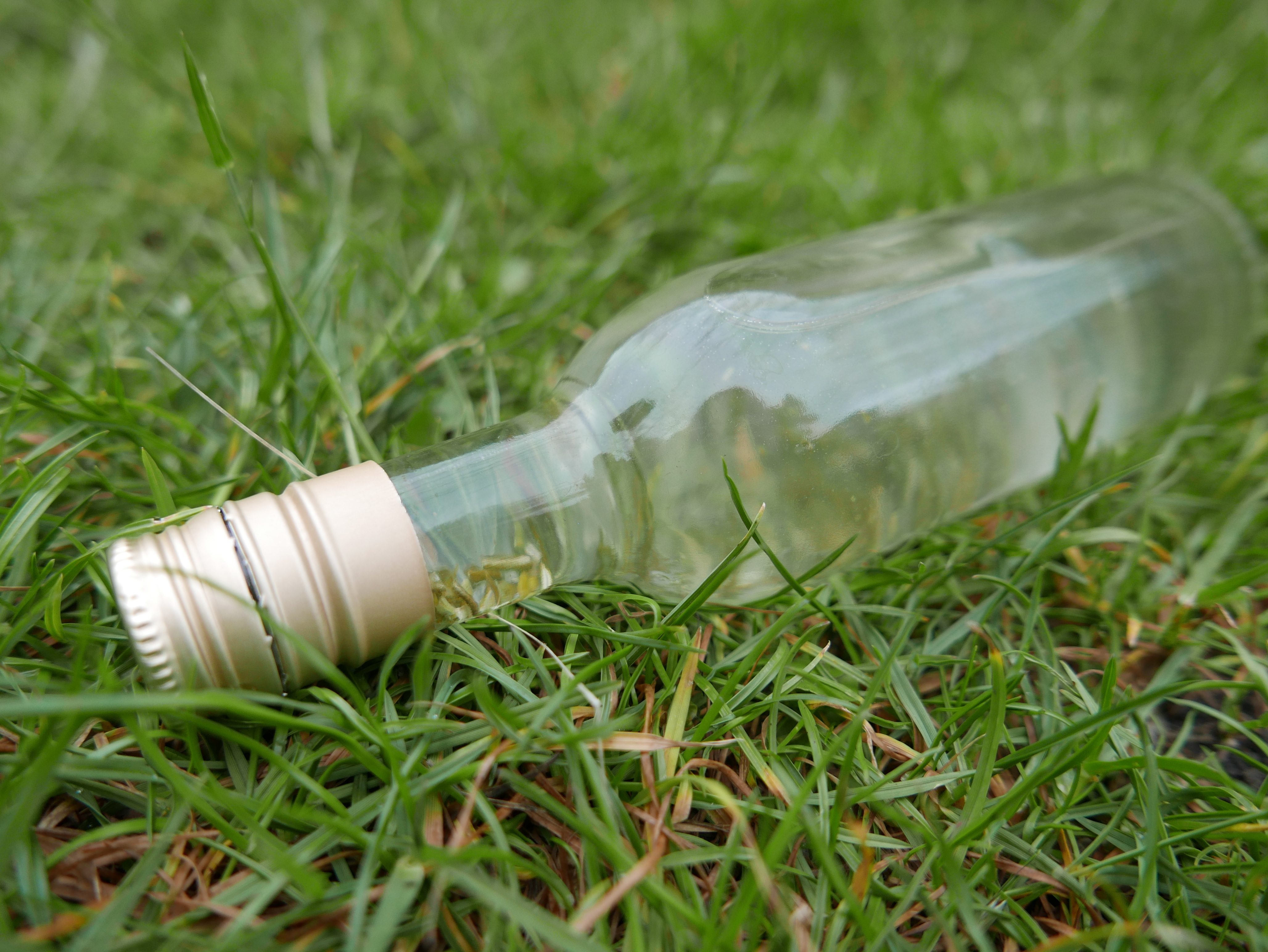
Pour the water into a small saucepan with the sugar and then heat gently and stir until the sugar has dissolved. Add the rose petals and simmer gently for a further 15-20 minutes, stirring regularly. Take the saucepan off the heat and leave the mixture to cool. Pour the rose syrup you have just made into a sterilised glass bottle with the gin and seal the bottle tightly. Give it a good shake and then leave it for a few weeks to infuse. Alternatively you can use also rose hip syrup to flavour the gin in the same way.
33. Rosehip and apple jam
Rose hips are ripe and ready to pick when they red and soft to touch but not shrivelled. Most people believe they taste best after the first frost of the year. To make rosehip and apple jam you will need:
Ingredients:
- 250g of rosehips
- 2 apples finely chopped
- 250g of caster sugar
- 2 lemons
- 1 litre of water

First wash the fresh picked rosehips thoroughly and then chop them roughly into halves or pieces. Next place them in a saucepan with 600ml of water. Bring the water to the boil and then reduce the temperature down to a simmer.
Then strain the mixture through a sieve or muslin cloth. Rose hips contain tiny irritating hairs so its important to stain the mixture properly a few times to make sure all the hairs have been removed.
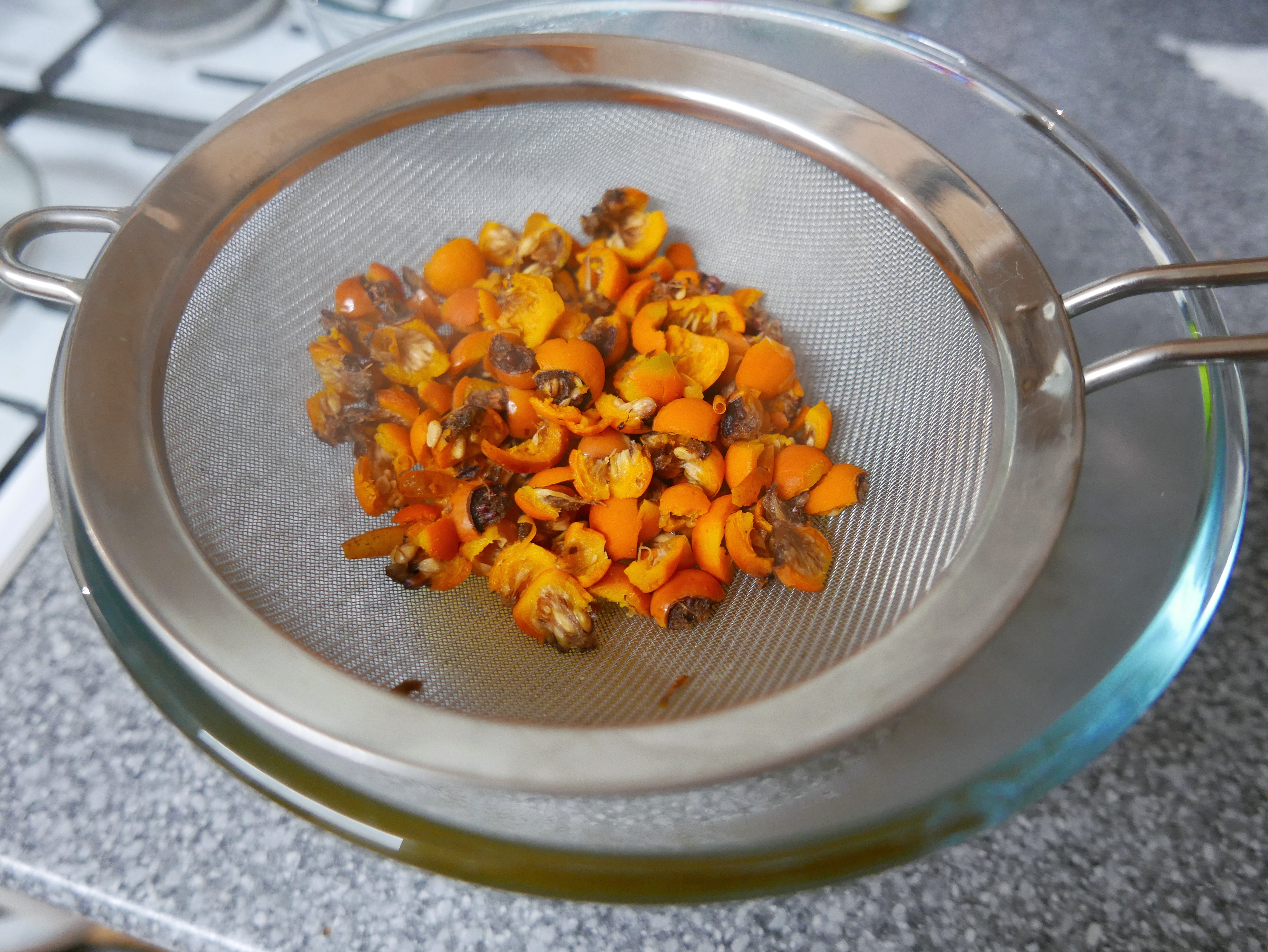
Next pour the rest of the sugar into a saucepan with the rosehip mixture, finely chopped apples and the juice from two lemons. Heat the saucepan slowly and stirring constantly. Simmer and stir on and off for a further 20-30 minutes then bring the pan to the boil again. Stir and keep the pan at boiling point for a further 5 minutes until, the mixture has thickened.
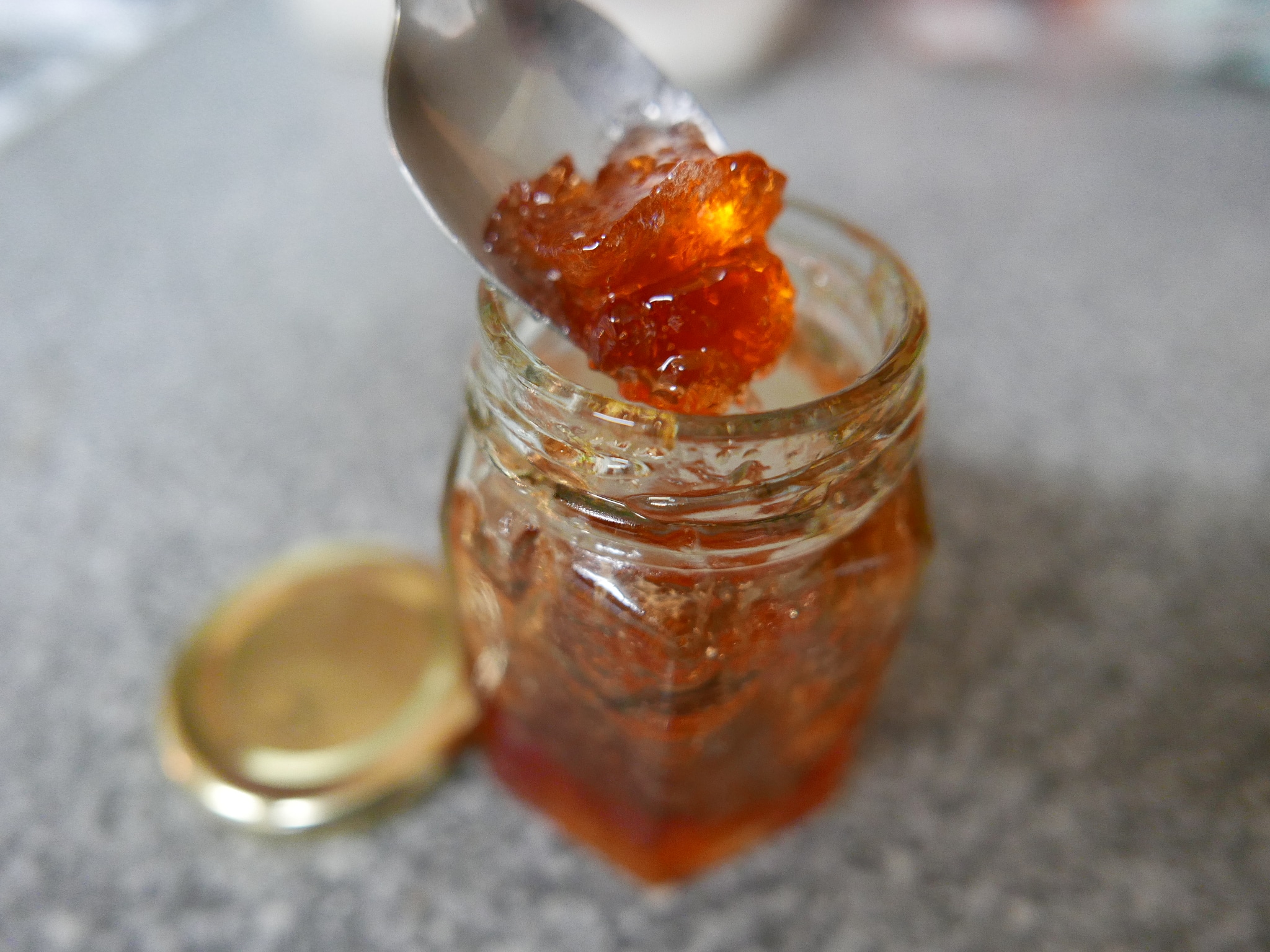
When you are happy with the thickness pour the mixture straight into a sterilised container. You can sterilise old jam jars by rinsing them out well with soapy water then filling them with boiling water for 5 minutes or by placing them in a warm oven for a few minutes (caution this will make the glass really hot, so handle with care and oven gloves.) You can enjoy your Rosehip and apple jam on toast, in sandwiches or on scones and cakes. Store it in the fridge in an air tight container and use within a week or two of opening the jar. Or if you make a large batch you could even freeze some to use and enjoy later.

- For day 29 of 30 days wild 2023 we went on a wildlife safari amongst the roses, we also dissected a rose to learn about the anatomy of flowers and enjoyed rose crafts and baking rose petal cakes.
- For day 16 of 30 Days wild 2022 we enjoyed smelling the roses in the garden, looked for minibeasts amongst them, made nature art, rose jelly and baked rose petal biscuits.
- For day 8 of 30 days wild 2021 we made rose petal and honey cupcakes, painted with roses and made petal pictures.
The Rose petal and honey cupcakes recipe and nature weaving board craft also feature on Twinkl’sMother’s and Other’s Day: Including Others this Mother’s Day blog.

If you like this you might like to try:
14 Chive recipes and activity ideas

22 Strawberry activities and recipes

12 Nasturtium recipes and activity ideas

Elderflower recipes and Elder tree activity ideas

14 Lavender recipes and activity ideas

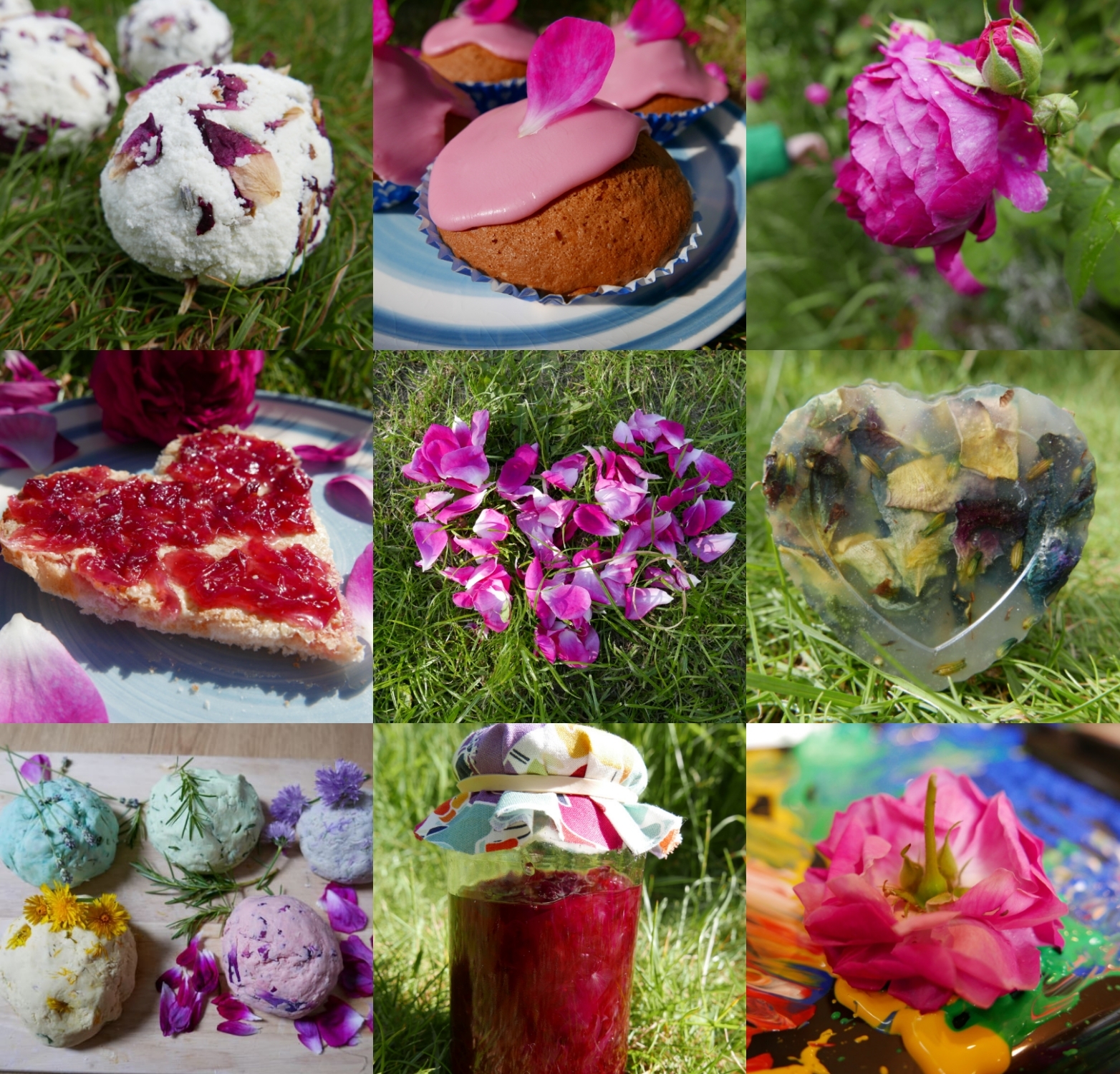
Woo!! I always love to giving rose to someone.
LikeLike